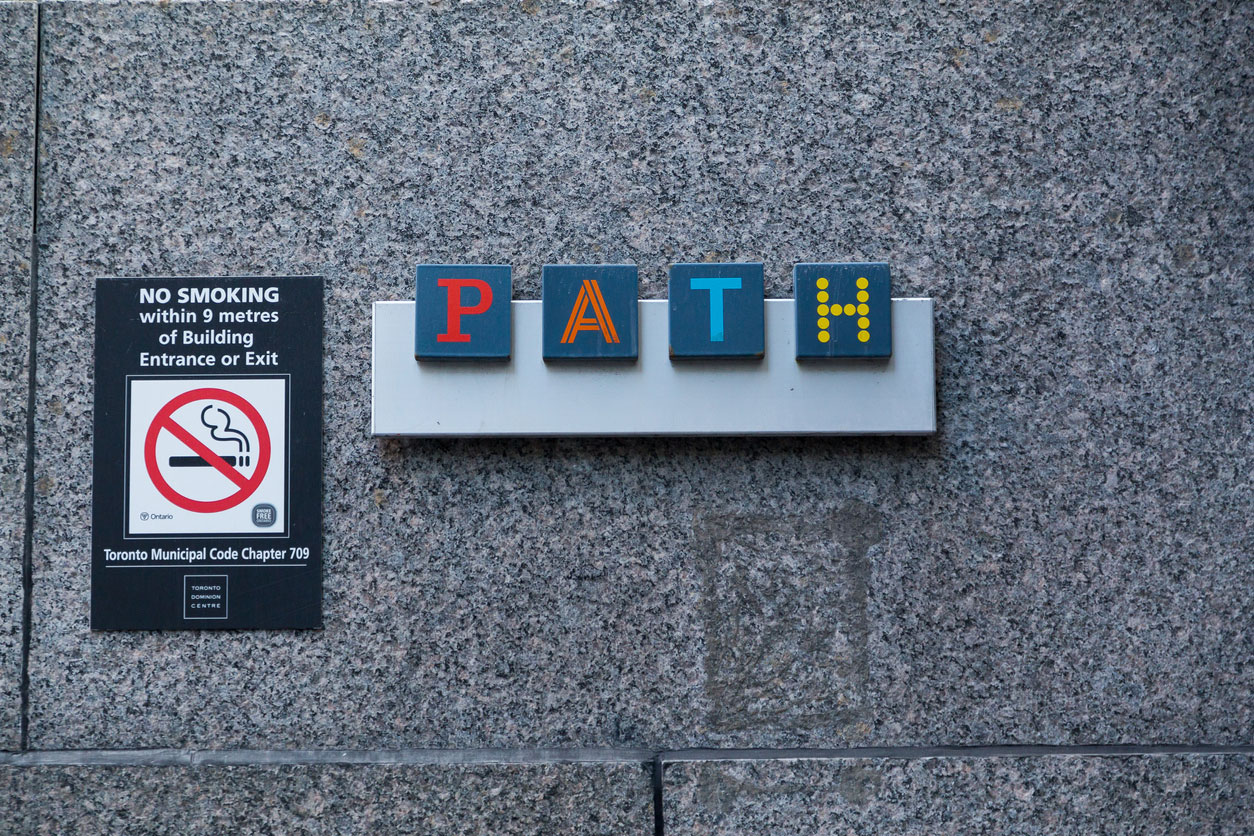
When I wrote about the underground PATH retail network eight months ago, many people were wondering when things would return to normal. Now, people are asking if things will ever return to normal and what that “normal” will look like.
Before the pandemic, the subterranean system of 1,200 shops, restaurants and services beneath Toronto’s financial district pulled $1.7 billion of revenue into its cash registers annually. The business model was solid: local subways and regional trains spilled thousands of passengers into the PATH’s corridors every morning rush hour. Office workers who toiled in the towers above queued for coffee and muffins in the morning, packed the food courts at lunchtime and browsed the shops throughout the day.
Then, pandemic lockdowns reduced business in the PATH by as much as 95%. Foot traffic disappeared and the hundreds of floors of office space above the PATH sat mostly empty as companies devised work-from-home policies for their employees.
As Ontario took a second step in its reopening plan this past summer, pedestrian activity resumed on downtown Toronto sidewalks. Restaurants are permitted to serve vaccinated diners indoors, and shoppers have returned to conventional malls such as the Eaton Centre. But improvement in the PATH lags.
According to Strategic Regional Research Alliance’s occupancy index, office occupancy in downtown Toronto is four times what it was in May, but still sits at only 12%. Most banks and insurers in the financial district don’t plan to require employees to return to the office until at least 2022. Some of those employers are working out hybrid on-site/off-site arrangements with staff.
Cal Newport, who writes about workplace issues for the New Yorker, suggested in a recent podcast that the work-from-home model has planted the seeds for permanent change in the way we approach work. But for now, they are only seeds.
Newport explained that “knowledge work” emerged amid the mid-20th-century factory paradigm, in which employees are paid for spending time where their employers can see them. But the pandemic taught us the factory paradigm is no longer the only model for work that can be performed on a computer connected to the internet.
In a September New Yorker article, Newport wrote about entrepreneur Chris Herd, who founded Firstbase.io Inc. in the north of Scotland in 2018. Herd had difficulty attracting talent to that locale (I can’t imagine why), so he organized his company to accommodate employees who may be located anywhere.
Similarly, tech startups conceived during the pandemic are embracing a “remote first” model. Like Herd’s firm, these companies will have no central offices, no long-term leases and low overhead per employee, and the remote-first structure will remove geographical barriers in staffing. “They will figure out how to do remote work properly,” Newport said in the podcast, “and it will spread to other sectors.”
But don’t expect the big banks, insurers and fund companies to go remote-first overnight. Large employers still embrace the office-as-factory model, Newport said. And when employees return to work over the next year or so, he predicted, employers may grant employees only one or two work-at-home days per week. But those remote-work seeds will bear fruit in about five years, Newport said, when today’s remote-first startups become big players.
In the meantime, as the workplace model changes, so must the PATH, suggested Bradley Jones, head of retail with Toronto-based Oxford Properties Group, one of the PATH landlords. For example, the PATH could be reimagined to serve downtown residents — not just workers — by housing enterprises that are destinations in themselves, such as educational facilities, clinics and libraries, Jones told Reuters in late September.
A recent stroll through the PATH told a more optimistic story. Not all establishments are open, but small clusters gather around food court vendors, and diners sit in roped-off sections under the watchful eye of security personnel who check vaccine passports. People in spiffy business attire and masks pass through the corridors by the dozen. And, most encouraging, many of these people wear a distinctive accessory around their necks: plastic security ID cards to access offices in the towers above.
Regulators must stand firm on binding authority for OBSI
Editorial: The idea that OBSI is biased against the industry doesn’t fit with the facts